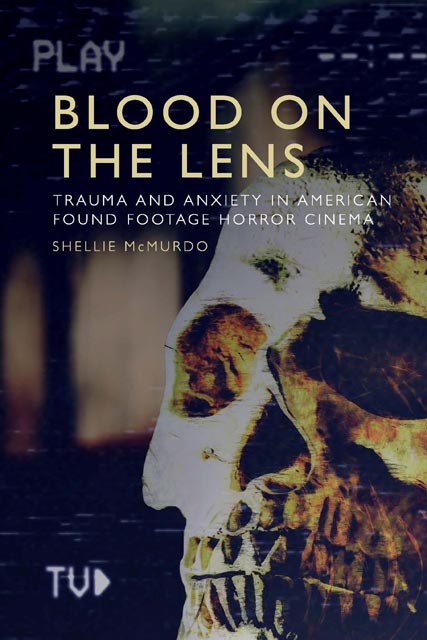1 - Found footage horror: a cinema of absences
Published online by Cambridge University Press: 13 April 2023
Summary
I mean, this genre has had two halfway decent films, one of which was fifteen fucking years ago. Every other found footage film since then has been complete bullshit. I mean, why people waste their money on this vomit inducing amateur hour bullshit is fucking beyond me
It’s perfect, it’s wonderful, it’s found footage
When many people think of the term ‘found footage horror’, the first film that comes to mind is The Blair Witch Project (1999): amateur filmmakers, running around in the woods, ensnared by something they cannot quite comprehend or capture on film. Audiences for The Blair Witch Project in 1999 reported feelings of dizziness and motion sickness while watching the film (Wax, 1999), citing the then unusual use of disorientating handheld cinematography as the cause. This was something fresh, new and as far away from its genre contemporaries of that year – the slickly produced House on Haunted Hill (1999) and The Sixth Sense (1999) – as well as the concurrent trend towards postmodern slashers such as Scream (1996) and Urban Legend (1998) as possible. The Blair Witch Project felt unedited, it felt raw and crucially, it felt real. It was something of a watershed moment for the horror genre, achieving an unprecedented level of financial success, and was duly praised for being ‘ingenious in its simplicity’ (Baumgarten, 1999), ‘the most inventive and genuinely frightening horror movie to appear in years’ (Williams, 1999) and as an ‘extraordinarily effective horror film’ (Ebert, 1999). Many noted the ‘simple, exquisite conceit’ (Rose, 1999) of the found footage format: a style that scholar Peg Aloi went as far as to call ‘the new horror aesthetic’ (2005: 188). If we fast forward seventeen years to the release of the film’s direct sequel, simply titled Blair Witch (2016), we find a very different critical reception. While some found issue with the film’s attempt to recreate the original’s sense of realism and tension (Smith, 2016; Watson, 2016) or dismissed it as an unnecessary retread (Travers, 2016; Felperin, 2016), others critiqued the found footage horror format itself, proposing that the release of Blair Witch signified ‘the loud death rattle of a once exciting sub-genre’ (Lee, 2016). Found footage horror has, partially because of the success of The Blair Witch Project and the immensely popular Paranormal Activity franchise (2007–), become one of the most instantly visually recognisable subgenres in post-millennial North American horror cinema.
- Type
- Chapter
- Information
- Blood on the LensTrauma and Anxiety in American Found Footage Horror Cinema, pp. 1 - 22Publisher: Edinburgh University PressPrint publication year: 2022



